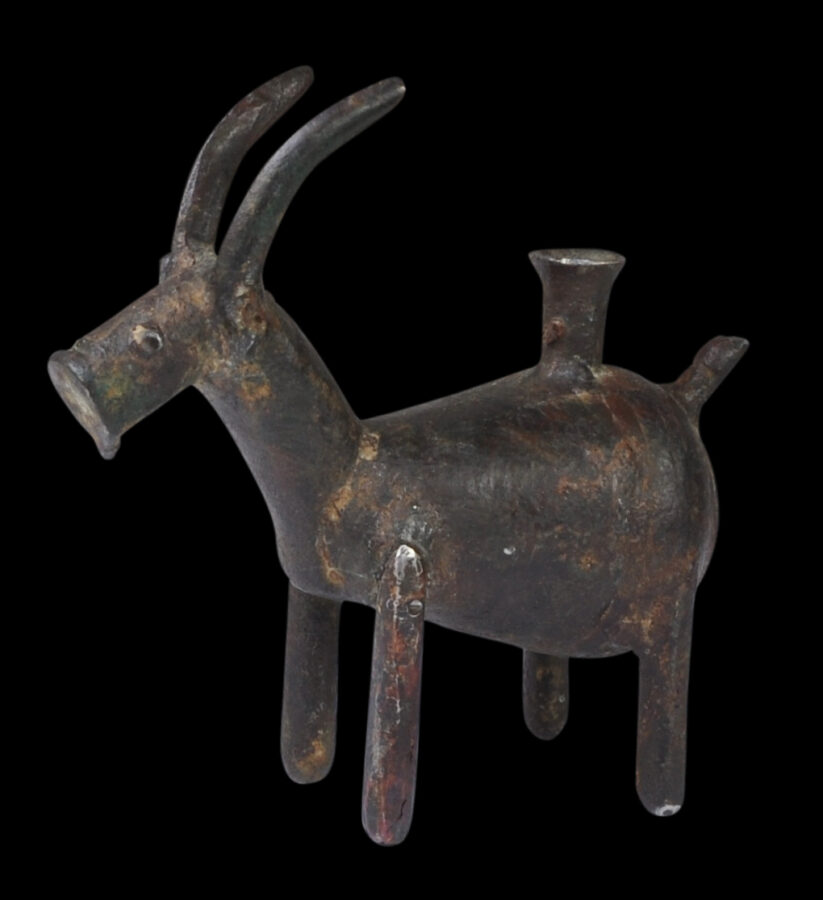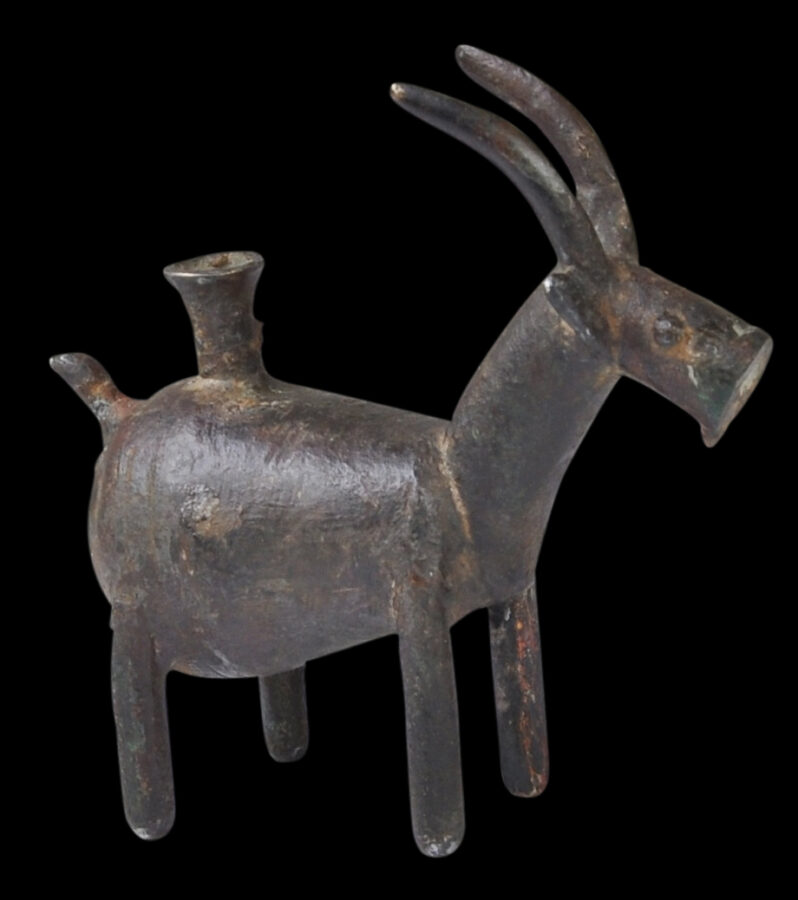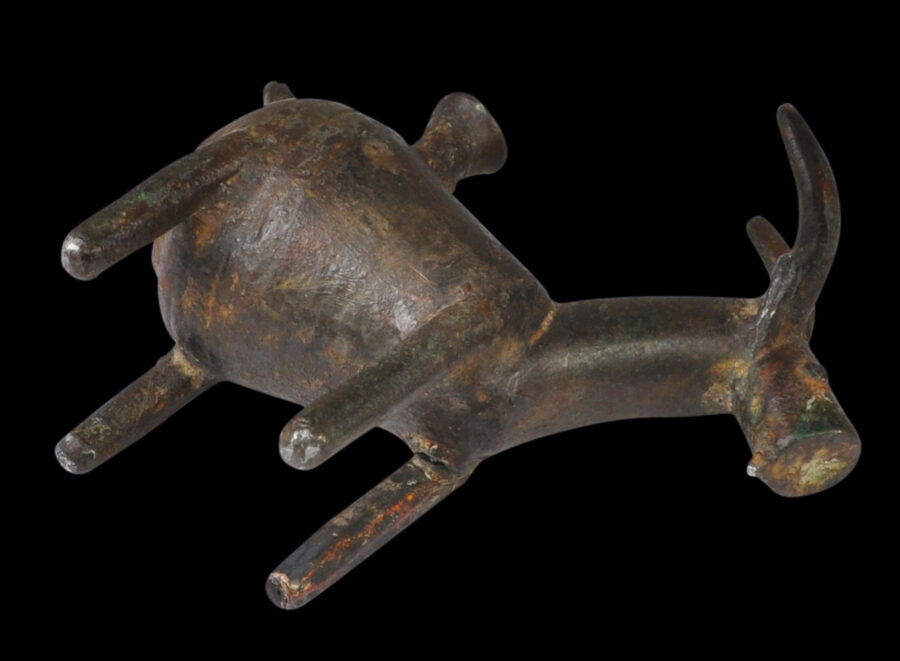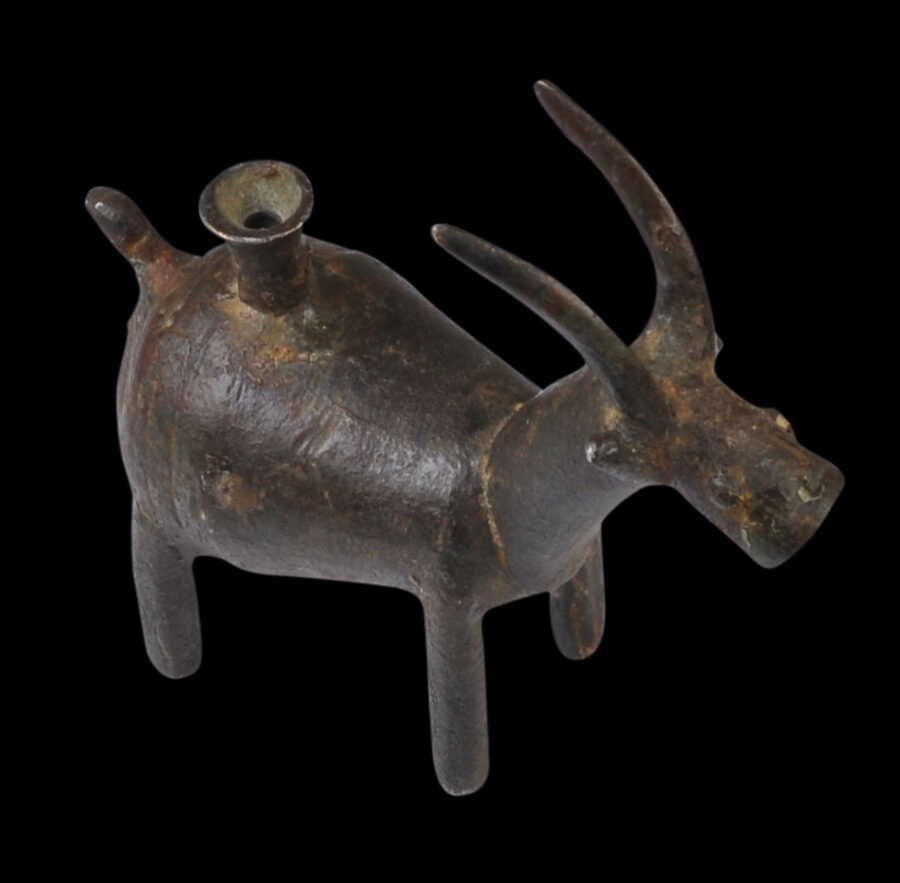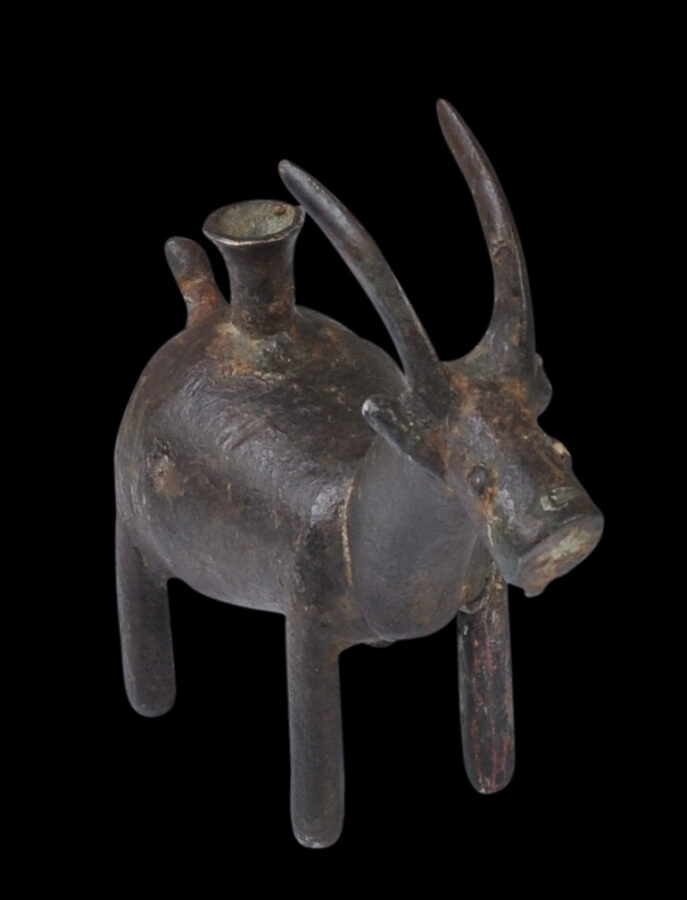Enquiry about object: 8751
Hittite Silver Model of a Long-Horned Bull
Hittite people, (likely) Anatolia, Central Turkey 1750-1200 BC
height: 8.5cm, length: 8.5cm, width: 3.5cm, weight: 136g
Provenance
UK art market
This long-horned bull figurine has been cast in silver. It has a barrel-shaped body, four thin legs, a short tail, a snub nose, and back-pointing horns.
The form appears to be that of a miniature, bull-shaped drinking vessel known as a bibru given the tall chimney-like opening on the back.
Small figurines of gold, silver, bronze and terracotta have been found widely over areas inhabited by the Hittites, and many are in museums around the world today.
The bull relates to one that is a part of a Hittite religious standard in the Museum of Anatolian Civilisations, Ankara, and published in Akurgal (2001, p. 21).
Bulls and stags all had important symbolism in Hittite religious culture. They represented gods and a giant ox was believed to carry the world upon his horns.
The Hittites were an Anatolian people who established a series of kingdoms and empires from around 1750 BC onwards. One kingdom centred on Hattusa in north-central Anatolia encompassed most of Anatolia as well as parts of the northern Levant and Upper Mesopotamia. An important source of information about the Hittites has come from cuneiform texts found in the area of their kingdoms.
Small items of Hittite material culture have been known since at least the nineteenth century.
The figurine has an encrusted patina consistent with great age. Small areas of wear show that the underlying metal is silver. On close inspection it can be seen that one leg has been broken away and then re-pinned but without any significant impact on the piece. This does not seem to have been done recently.
References
Akurgal, E., The Hattian and Hittite Civilisations, Publications of the Republic of Turkey – Ministry of Culture, 2001.


